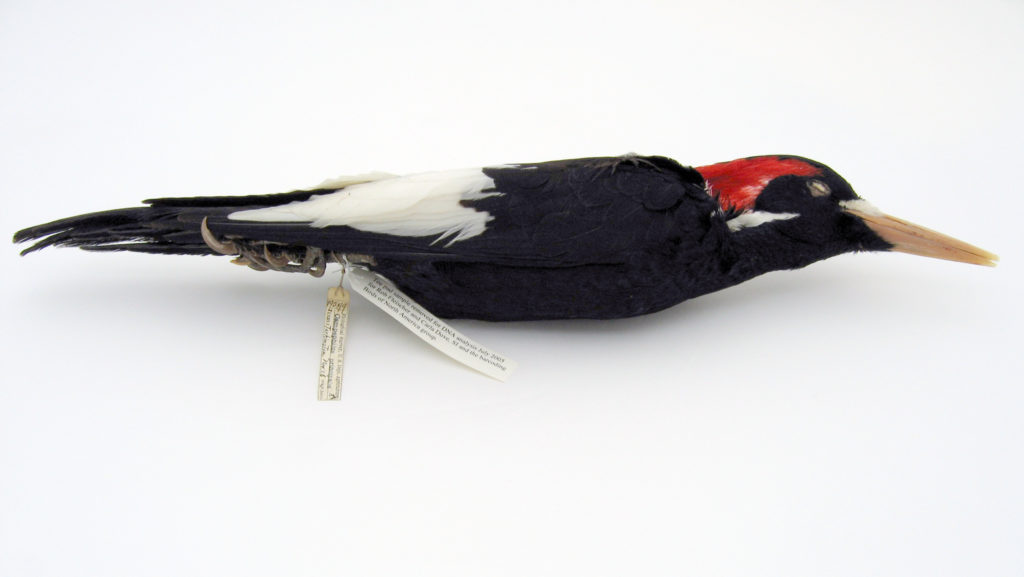This past autumn, the U.S. Fish and Wildlife Service announced their intention to declare 23 species extinct. Nearly half of those species (43%) are from the Southeast, more than any other region. Alabama is home to nine, tying Hawaii for the most proposed new extinctions. Alabama already had more extinct species than any other state on the continent —82 in all.
While most of the 23 species haven’t been verified as alive for decades, these losses still sting.
Alabama is home to more species than any state east of the Mississippi River, and we rank 4th nationally. The state’s exceptional biological and ecological diversity is why we are “Alabama the Beautiful.” But biodiversity is more than outdoor decor. Wild species support our economy and our culture. Pollinators are essential to agriculture. Coastal marshes support our commercial fishing industry. Multitudes of unseen fungi sustain our forests.
Among the 23 proposed new extinctions are 11 birds, 8 freshwater mussels, a bat, a plant, and two fishes. The roster of casualties hurts my heart. Especially the birds. As a lifelong birder, I’ve seen bird numbers in the US plummet by 30% since I was a child. Most populations could recover by midcentury with proper conservation strategies. But extinction is forever. No one will ever again be awed when seeing an Ivory-billed Woodpecker, the largest woodpecker of North America.
And as a freshwater biodiversity advocate, it’s wrenching that 8 more freshwater mussels of the Southeast are officially gone. Our region is the center of Earth’s freshwater mussel diversity, yet because of river dams and mud pollution, freshwater mussels have the highest extinction and endangerment rates of any group of North America inhabitants. As filter feeders, mussels once kept our rivers running clear and clean. Now dozens of mussels are extinct and our rivers run brown.
The latest extinctions are symptoms of a global biodiversity crisis. The rate of species loss in the modern era rivals the greatest extinction events recorded in Earth’s long fossil history. According to the World Economic Forum’s Global Risks Report 2022, political, business, and cultural leaders rank biodiversity loss as the third greatest threat to humanity over the next decade. And if we don’t change how we live on the planet, experts predict that by the end of this century one million species will go extinct. Dozens of them will be from Alabama.
But enough of that! In defiance against the landslide of grim facts and forecasts, I am taking stock of the many reasons to be hopeful about the future of biodiversity. And I dare say that there are reasons to celebrate.
First, we should celebrate that the list of proposed new extinctions isn’t longer. Empowered by federal legislation passed in the early 1970s, scientists, state and federal agencies, and environmental groups have labored to prevent new extinctions. And they have been very successful. Thanks to their efforts, hundreds of species have dodged extinction. Some of this work is done at the Alabama Aquatic Biodiversity Center, where employees of the Alabama Department of Conservation and Natural Resources breed endangered species and release them into the wild.
Another reason why more species haven’t disappeared is due to technological advancements allowing conservation scientists to study species in ways that would have seemed like science fiction to a biologist of the 1960s: side-scan sonar to spot endangered fishes in murky rivers; new methods for reading and decoding DNA; camera traps, drones, and satellite transmitters for tracking movements. Such techniques have revealed secrets enabling biologists to design successful conservation strategies.
In addition, the science of ecology has established beyond any doubt that humanity’s well-being is inescapably dependent on biodiversity. Food production. Clean water and air. Healthy soil. A safe climate. All of this depends on ecological networks linking millions of wild species and trillions of individual organisms. This, alone, is a powerful incentive for everyone to support biodiversity conservation.
Governments and leaders in the private sector here and around the world are finally understanding that biodiversity is essential. And they are taking action. In 2021, over 50 countries, including the US, committed to protecting 30% of their lands and seas to prevent mass extinctions and slow climate change by the year 2030. The 30×30 campaign has inspired philanthropists to support conservation at levels previously unimaginable. In summer 2021, nine philanthropists committed a record-breaking $5 billion to global conservation efforts. And at the 2021 climate conference in Glasgow, 110 world leaders agreed to end deforestation by 2030 and pledged $19 billion for the programs to get it done.
Ordinary citizens are also getting the message and getting involved—not just here in the US, but in nations around the world. Local support is critically important. If locals don’t care about biodiversity, then more extinctions are inevitable and ecosystems will unravel. This collective awakening to our interdependence with nature is incredibly hopeful.
And this is where you and I can play a part. We can help save biodiversity by donating our time, attention, or money to conservation. You can support state conservation agencies by purchasing a hunting or fishing license, or a conservation-themed license plate. Or you can financially support environmental groups committed to conservation. Some, like The Nature Conservancy and The Audubon Society, have global and Alabama-based programs. Others, like the Alabama Rivers Alliance, Alabama Wildlife Federation, and Waterkeepers Alabama, have a state-level focus. And there are dozens of smaller groups working in cities, towns, and watersheds across the state.
Giving money isn’t the only way to help. You can volunteer for conservation activities in your area. Or you can talk about the importance of biodiversity conservation with your friends, family, and neighbors. You can hop online and find ways to adjust your habits to reduce your environmental impact. And—most importantly—you can vote for candidates who understand the value of conservation.
Don’t hesitate to act. We need nature. And nature needs us now more than ever.

